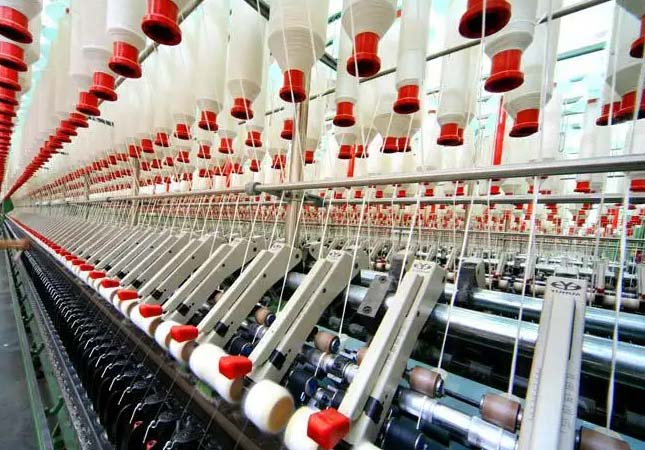Textile is called so because it is the general term of weaving and spinning in Chinese, but in modern, this word is not just refers to traditional spinning and weaving due to the continuous development and improvement of the textile system, especially after the emergence of technologies such as non woven machine and materials, also the technologies of three-dimensional composite weaving.

This word also refers to the non-woven technology, modern three-dimensional weaving technology, modern electrostatic nanoscale net technology and other production of garment, industrial, textiles for decorating. Generally, modern textile refers to a multi-scale structural processing technology of fibers or fiber aggregates. Textile and printing and dyeing technology in ancient China has a very long history, which started as early as the primitive society, people use nature resource to weaving and making tools that may be used in daily life for adapting to climate changes, and they also knew how to discover locally resource as raw materials for ancient weaving. These applications of ancient textile laid a solid foundation of modern textile.
Development History of Textile Industry
1. Founding of People’s Republic of China(1949) - 1978
China’s textile industry achieved an expansion during this period, the general framework of China modern textile industry had been built but remained many structural contradictions due to the centralized planned economic system managed by China at textile industry at that time.
2. 1978 - 1990s
The economic system of textile industry has changed from original centralized planned economic system to market economic system, which made the marketization and socialization of textile industry level up to a higher stage. However, there were serious vicious competition among enterprises because of the duplicate establishment of textile industry.
3. 1990s - 2003
The textile industry has completed the three goals of spindle reduction, staff reduction and reverse loss after four consecutive years of efforts since 1988, the Since 1998, and the industrial structure adjustment and technological transformation have achieved remarkable results. In 2003, China became the largest country in the world in textiles and clothing trade.
Development Trend of Modern Textile
1. Raw Material
It is inevitable of the updating of new chemical fibers and natural fibers, according to the intellectual property achievements that developed by some developed countries in the world, the research of new chemical fibers and the upgrading of natural fibers are the top priorities, and it needed to focus on the development of nano-, composite, ecological, high-performance and multi-functional materials. Under the high pressure of environment protection, some small and medium-sized enterprises now facing the development limitation because of the difficulty in obtaining sufficient pollutant discharge permission, and may even result in the difficulty of updating equipment due to the limited funds. Some developed countries such as the United States and Japan have already begun to develop recycled materials, and made their future research will be more inclined to green and eco-friendly new bio-based fibers and recycled materials.
2. Textile Products
More textiles such as clothing and home textiles will be produced. With the improvement of the living standards, the comfort, personalization and differentiation,which customers care most, will be the core competitiveness of products and gradually opening up a larger consumer market. China’s clothing, home textiles and industrial textiles have a lot of room for development currently and it is expected that China’s clothing textile will grow by 3%-5% in the next ten years, home textiles will grow by 6%-7%, and the growth rate of industrial textiles can reach about 10%.
3. Textile Enterprises
It will develop in the direction of internationalization and branding, which is determined by the market structure. It is the ultimate way out for China’s textile enterprises after the entry into WTO of China that join the international market and enhance its international competitiveness. Due to economic globalization and the impact of various foreign brands, China’s textiles no longer occupy a strong advantage as in 2003 so that it is urgent to build our own clothing brands to have the competition with foreign brands.
Entering the international market requires the strong strength of domestic enterprises. Therefore, besides the management level improvements, enterprises must also have strong core competitiveness in order to occupy a place in the international market, which means enterprises must form brand awareness and develop in the direction of branding, and improve the influence of enterprises and products to fundamentally enhance the value of products.




